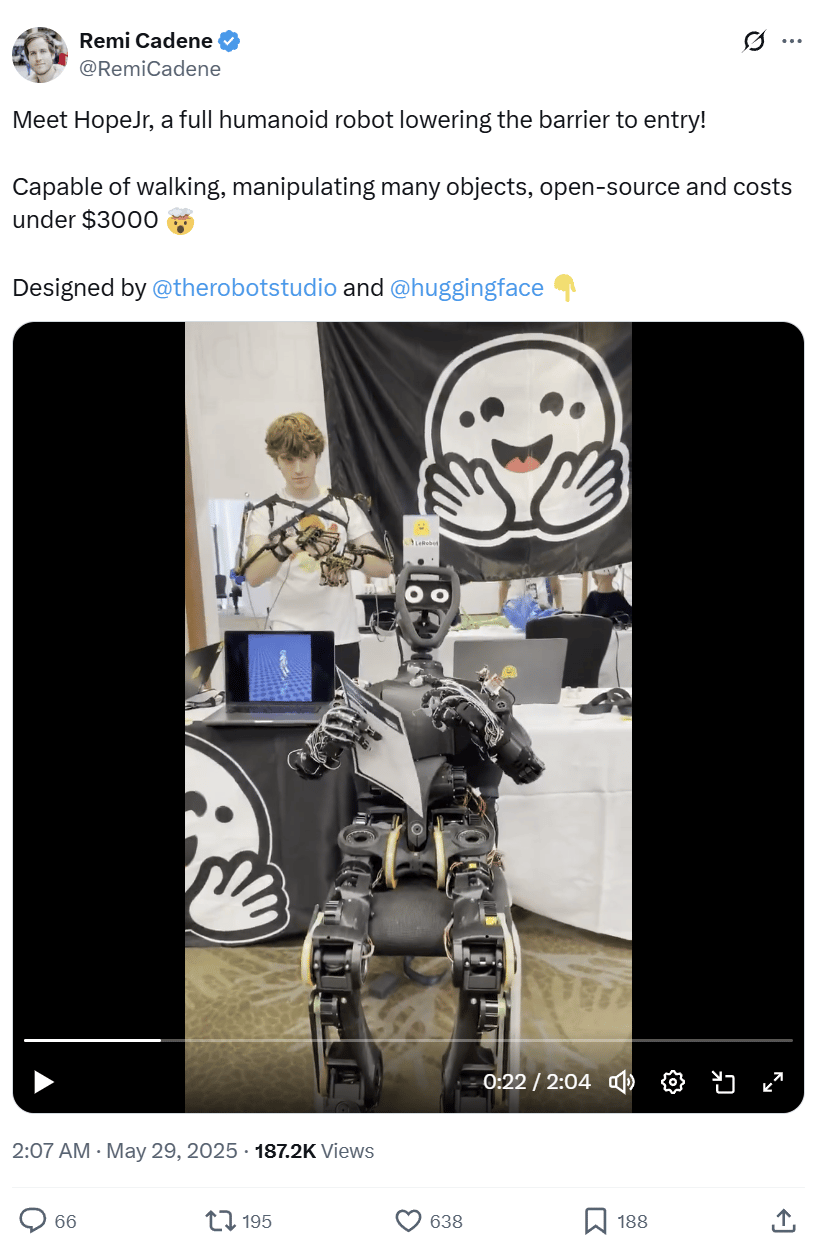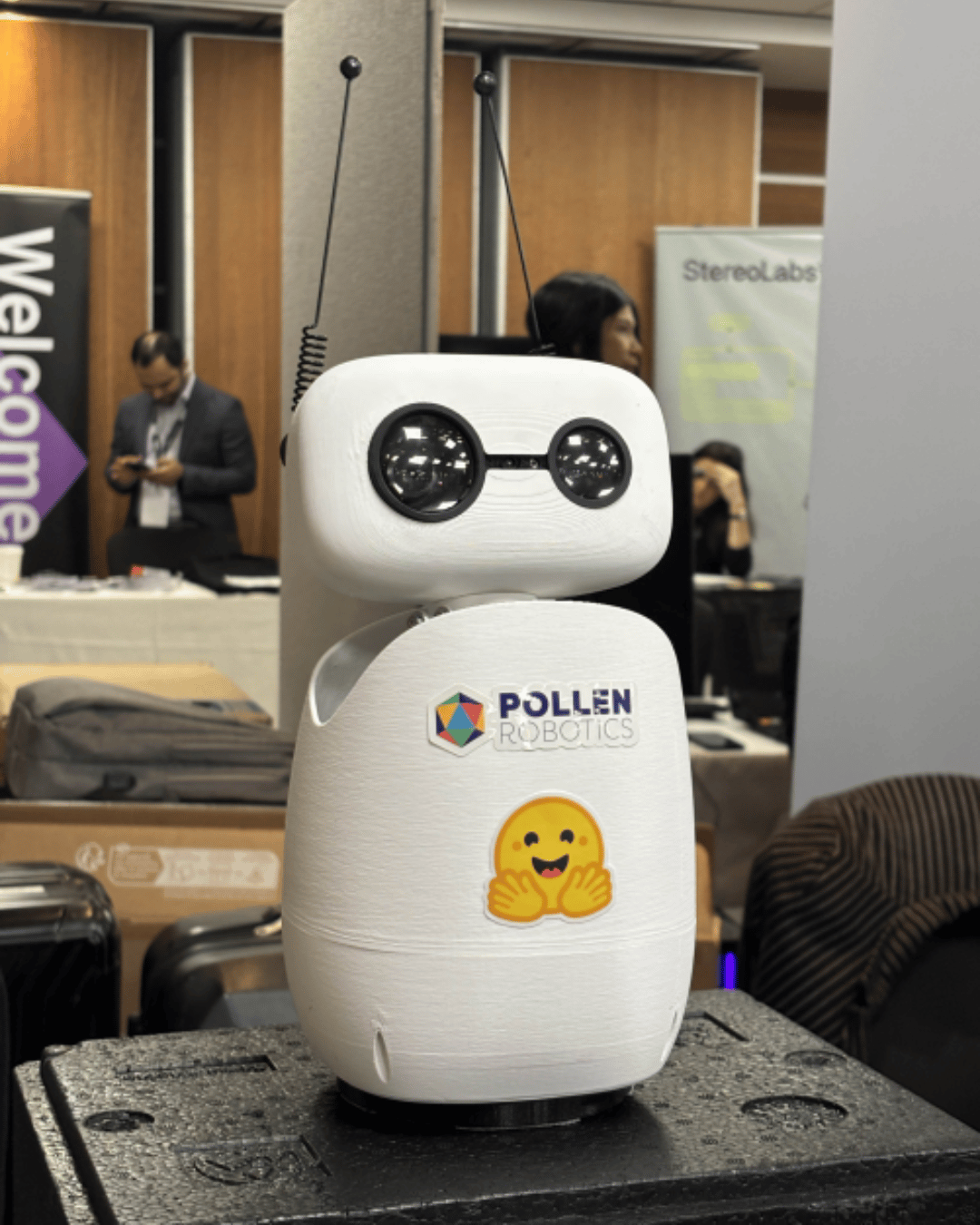
Image Source: ChatGPT-4o
Hugging Face Launches Two Open Source Humanoid Robots
Hugging Face has expanded its robotics portfolio with the debut of two open source humanoid robots: HopeJR and Reachy Mini. The announcement marks a deeper commitment by the AI development platform to make robotics more accessible, affordable, and transparent.
HopeJR is a full-size humanoid robot capable of walking and moving its arms, with 66 actuated degrees of freedom—or 66 distinct movements. Reachy Mini is a smaller, desktop robot that can move its head, listen, speak, and serve as a platform for testing AI applications.
While neither robot is available for immediate delivery, Hugging Face expects to begin shipping initial units by the end of the year. A waitlist is now open for interested developers.
Pricing and Availability
HopeJR is expected to cost around $3,000 per unit.
Reachy Mini is projected to range between $250 and $300, depending on tariffs.
Both robots are fully open source. This means developers can assemble, modify, and study the robots without proprietary restrictions—something Hugging Face sees as essential for democratizing robotics development.
“The important aspect is that these robots are open source, so anyone can assemble, rebuild, [and] understand how they work,” said co-founder and CEO Clem Delangue in an email to TechCrunch. “And [they’re] affordable, so that robotics doesn’t get dominated by just a few big players with dangerous black-box systems.”
Powered by Acquisition and Partnerships
The company credits its April 2025 acquisition of Pollen Robotics with helping make these releases possible. The Pollen team brought additional expertise in humanoid robotics that Hugging Face lacked previously, according to Delangue.
This release follows a series of recent moves by Hugging Face to expand its robotics capabilities:
In 2024, the company launched LeRobot, a collection of open source models, datasets, and development tools for building robotics systems.
In early 2025, it unveiled an updated version of the SO-101, a 3D-printed programmable robotic arm created with French firm The Robot Studio.
It also expanded LeRobot’s training data through a partnership with AI startup Yaak, adding datasets for autonomous driving systems.
What This Means
Hugging Face’s move into humanoid robotics reflects a growing push to bring open source principles into one of the most hardware-intensive areas of AI. At a time when many robotics systems remain closed, proprietary, and costly, HopeJR and Reachy Mini offer an alternative: accessible platforms that individual developers and small labs can afford and adapt.
While other major AI companies are investing in robotics—often with high-end, closed systems—Hugging Face is taking a different route. By releasing open source robots at a fraction of the typical cost, it’s creating new opportunities for education, prototyping, and experimentation.
If successful, this approach could expand who gets to participate in robotics development—and challenge the dominance of larger players building behind closed doors.
Editor’s Note: This article was created by Alicia Shapiro, CMO of AiNews.com, with writing, image, and idea-generation support from ChatGPT, an AI assistant. However, the final perspective and editorial choices are solely Alicia Shapiro’s. Special thanks to ChatGPT for assistance with research and editorial support in crafting this article.


